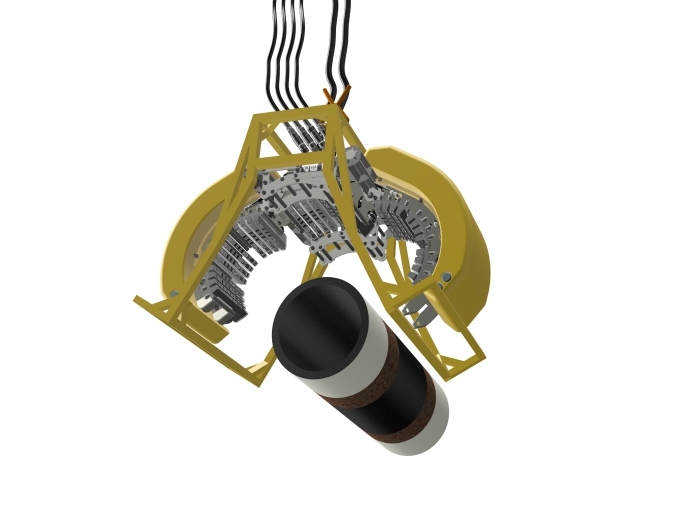New subsea pipeline structural integrity assessment tool
Subsea inspections are extremely challenging because of the harsh deep-water operating environment involving high pressure, low temperatures and highly hazardous environments. Until recently, inspections of undersea structures such as pipelines were performed manually by divers. However, due to health and safety issues, a shortage of trained divers, and cost (in terms of both time and money), oil and gas companies – under the encouragement of regulatory authorities – have significantly reduced the number of diver operations. Instead, they now prefer to lease or buy underwater remotely operated vehicles (ROVs) fitted with non-destructive testing (NDT) systems to conduct inspection operations. The VERNE project developed an NDT measurement tool designed to be fitted to a range of underwater ROVs and combining two high-end complementary technologies. These are long-range ultrasonic testing (LRUT) to gain a long-range scanning ability in both directions from the inspection point, and ultrasonic normal probe array (UNPA) to achieve superior topographical information in defect characterisation.
Advanced technology
The compact light-weight NDT measurement tool is a modular system, combining a clamp, a hydraulic system and a canister containing electronics. The VERNE system can be easily connected to the ROV via an ethernet cable and a standard fish-tail handle mounted on top of the clamp, which fits to the ROV manipulator arm. Using the LRUT and UNPA NDT technologies, VERNE detects corrosion and material damage on the subsea pipelines and predicts the likelihood of failure well in advance. The inspection tool clamps itself to the surface of the pipeline and uses LRUT to locate flaws in the pipeline up to 100 m either side of the inspection point. Once a defect has been detected, the clamp is repositioned to the point of the flaw and the UNPA characterises it in detail. VERNE’s technologies enable examination of both external and internal surfaces of structures without the need to remove anti-corrosion coatings and/or biofouling. “This will lead to significant cost savings for asset owners while offering a key competitive advantage to subsea service providers,” says VERNE Marketing Manager Knut Glorvigen from Norwegian SME Dacon.
Cost savings
The technologies integrated and finalised during this project include marinised transducers and probes together with processing capabilities capable of transmitting strong signals in seawater, data transmission to surface and advanced remote operation methods. “VERNE achieves far greater inspection speed and precision than other systems, thus presenting target customers with a system for more efficient management of their underwater assets,” Glorvigen explains. The potential market for VERNE will be in-service inspection and conventional inspection as part of maintenance in the framework of asset integrity management. “These inspection costs are difficult to cut back, due to health and safety concerns. VERNE can thus provide significant cost savings thanks to the current deployment, requiring only a small ROV without the need of a vessel with the full crew,” observes Glorvigen. “Therefore, VERNE can replace existing technologies.” Although oil and gas is the primary target market for VERNE, and particularly in the subsea inspection market, there are certainly additional secondary application fields in the renewable energy sector. VERNE will be particularly beneficial in the subsea oil and gas market. “VERNE will thus have potential applications in a wide range of industries, including the oil and gas decommissioning market, offshore wind industries, and on-shore oil and gas transportation,” Glorvigen points out.
Keywords
VERNE, subsea, pipeline, oil and gas, ROV, NDT, LRUT, structural integrity, ultrasonic normal probe array



